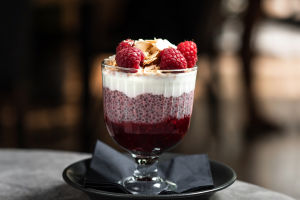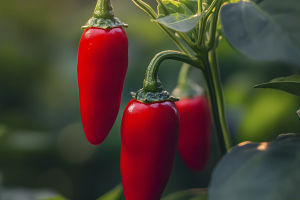Welcome to Japan, Lykkers! When thinking about Japanese cuisine, the first images that may come to mind are sushi and ramen. However, Japan offers a much richer food culture that goes far beyond the familiar.
With Tokyo hosting more Michelin-starred restaurants than any other city on Earth and Osaka known for its deep love of food (even creating new expressions to describe it), Japan is considered one of the ultimate destinations for food lovers.
A key element in this country's culinary excellence is *umami*, known as the "fifth taste," which enhances the overall savoriness of any dish. Let’s dive into ten must-try foods that make Japan a true paradise for the palate.
1. Sushi
A timeless tradition from ancient times. Sushi originated in Southeast Asia and was introduced to Japan around the 8th century as a method of preserving fish with fermented rice. The style most popular today, known as Edo-mae sushi, developed in Tokyo during the Edo period.
It features vinegared rice paired with fresh seafood, often served with seaweed and soy sauce. From the luxurious restaurants in Tokyo’s Ginza district to the more affordable conveyor belt spots known as *kaiten-zushi*, sushi remains a signature part of the country’s food scene.
2. Tempura
Crispy perfection with a history of adaptation. Tempura was introduced in the 16th century through contact with Iberian traders in the port city of Nagasaki. The Japanese adopted and refined this method by lightly battering seafood and vegetables, then frying them until golden.
The result is a dish that is light, crunchy, and incredibly satisfying. Often served with dipping sauces, rice, or noodles, tempura is enjoyed across Japan in both high-end and casual eateries.
3. Ramen
The go-to comfort meal with countless variations. Ramen was inspired by noodle soups introduced from China in the late 19th century. It quickly evolved into one of Japan’s most beloved dishes.
Each region has its own spin, with unique broths such as miso, salt-based, and soy-based, combined with toppings like green onions, marinated eggs, and sliced meat. This affordable and flavorful dish is often enjoyed as a quick meal and is served in specialty shops across the country.
4. Soba
Traditional buckwheat noodles with a legacy. Dating back to the Edo period (1603–1868), soba noodles are made from buckwheat flour and can be served hot or cold. In Tokyo, soba is especially popular, often topped with green onions, grated radish, or tempura. Cold soba is typically dipped into a light soy-based sauce called tsuyu, offering a refreshing meal during the warmer months.
5. Udon
Thick noodles for a hearty meal. Udon noodles are thicker and more filling than soba, made from wheat flour and typically served in a mild broth. Common toppings include green onions, tofu, and crispy tempura. Each region has its own variety, and udon shops are a staple across the country. It is customary to slurp these noodles—a sign of appreciation and enjoyment in Japanese dining culture.
6. Takoyaki
A street food favorite shaped by Osaka. Takoyaki, which originated in Osaka in the 1930s, are round, grilled snacks made with batter, minced seafood like octopus or shrimp, green onions, and pickled ginger.
Cooked in a special pan to achieve a crispy exterior and soft interior, they are usually topped with a savory sauce and dried seaweed flakes. These bite-sized treats are perfect for sharing and are commonly found at festivals and street markets.
7. Onigiri
A convenient and nostalgic snack. Onigiri, or rice balls, date back to the 11th century and were originally used as portable meals. They are typically filled with savory ingredients such as salted fish, pickled plum, or dried cod roe, and wrapped in dried seaweed (nori). Onigiri is widely available in convenience stores and supermarkets, making it a reliable and easy snack for travelers.
8. Okonomiyaki
The customizable pancake from Kansai. Originating in Osaka and Hiroshima, okonomiyaki is a savory pancake made from a batter of flour, cabbage, and eggs. The name combines “okonomi” (what you like) and “yaki” (grilled). Toppings vary from seafood and cheese to noodles and vegetables. Often prepared on a hot iron plate, it is served piping hot and eaten directly from the grill using a small spatula.
9. Yakitori
Skewered bites with simple flavors. Yakitori consists of skewered pieces of chicken, grilled over an open flame. It became popular during the Meiji era with the rise of street stalls. These skewers may include thighs, wings, or other parts, seasoned with salt or a soy-based glaze. Typically served in small shops called izakaya, yakitori is a popular snack or quick meal.
10. Katsudon
A rice bowl associated with good fortune. Katsudon combines a crispy breaded cutlet with a seasoned egg mixture, all placed over a bowl of steamed rice. The dish became popular in the early 20th century and is often eaten before challenges or exams. Its name includes the word “katsu,” which sounds like the word for victory, making it a symbolic meal for success.
Why Japan is a Food Lover’s Paradise
Endless flavors to explore. Japanese cuisine is rooted in respect for ingredients, precise preparation, and the pursuit of taste balance. From the complexity of sushi to the comfort of noodle dishes, the food culture reflects centuries of tradition and innovation. Each region adds its own local ingredients and methods, making every bite an opportunity to learn more about the country’s history and identity.
Final Thoughts
For anyone eager to explore new culinary horizons, Japan offers an exciting and unforgettable experience. The variety of dishes, each with its own story and regional roots, makes the country a true destination for food exploration. So pack your curiosity—and your appetite—and prepare for a delicious adventure you’ll remember long after your last bite.


